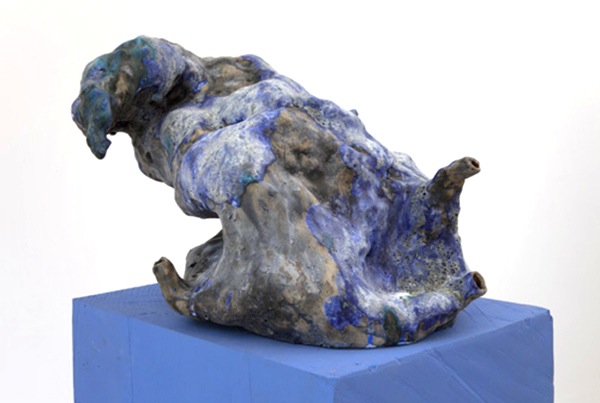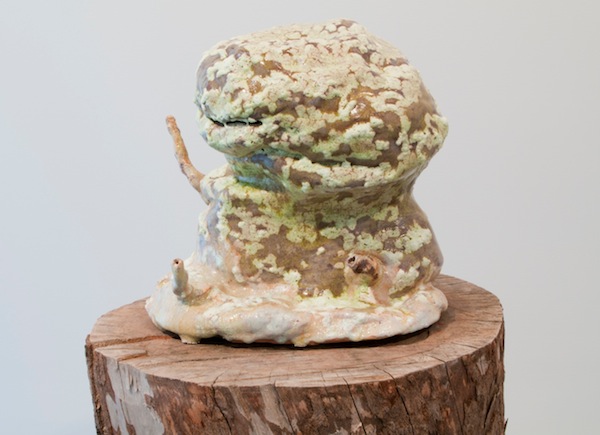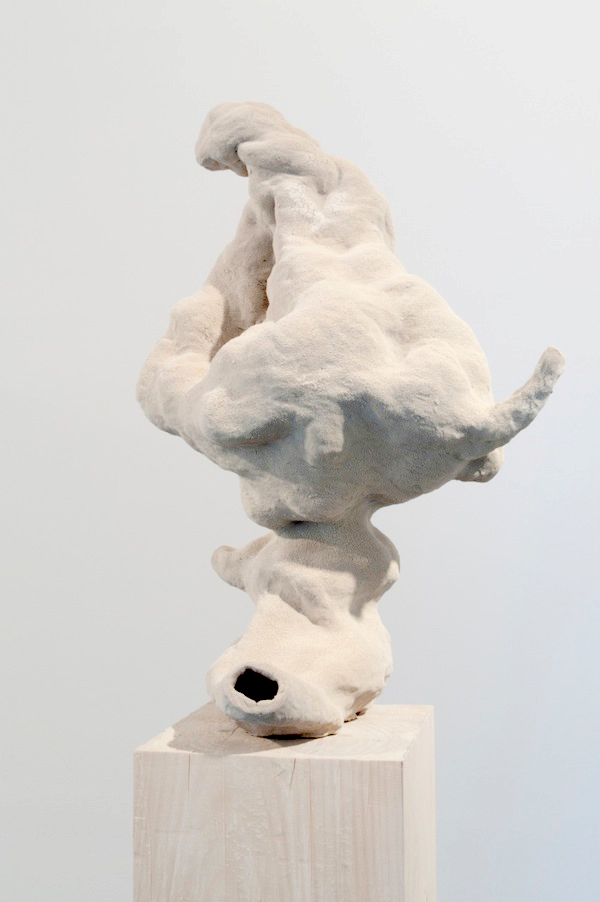
Arlene Shechet, Once Water, 2011
Arlene Shechet In The Thick of It At James Kelly Contemporary
While viewing Arlene Shechet’s compelling show, In the Thick of It, at James Kelly Contemporary, the term beginner’s mind popped up because this is the paradoxical work of an expert in unknowing, in openness. It teeters on the edge between form and formlessness, which must be the most exciting and dangerous place for an artist to be. In a Bomb magazine interview the artist admits, “One day I was making something that was blobby and looked, I thought amusedly, like a Buddha. In a different state of mind it would have looked like a pile of shit.” Two pieces in the show retain the elemental coil form, pinkish, intestinal, wormy, yet hinting at becoming cube or writing, eloquently tracing the birth of the most abstract ideas in the gut. Shechet flirts with ceramic disaster and collapse but in the end triumphantly reveals vulnerability as a strength, allowing us to catch creation in the act.

Arlene Shechet, Rascal (detail), 2011
The majority of the ceramic works read as whole living bodies with orificial limbs on pedestals, but these might be the bodies of bacteria, mold, viruses, aliens, certainly not classical bodies. The pedestals are a geometric counterpoint, bringing in different materials, such as wood and metal, yet integral to the whole, giving the body-objects a way to relate with dignity to the world of furniture,architecture, and abstractions that we live in. The range of color and texture employed is astounding and brings endless chains of association throughout the man-made, mineral, plant and animal kingdoms: chapped skin, lichen-covered rocks, sugar-dipped confections, sand-coated elbows, oily puddles, moldy bread, crusty scabs, bruises, marble, shells…. These awkward bodies are by turn pathetic, comical, grotesque and yet elegantly, sensitively poised.
The sculptures present us with the riddle of a surface that appears to be a living membrane, both inside and outside at once, responsive to our shared environment, perhaps even to our regard. In Shechet’s work, the surface, or skin, is neither the site of disguise, nor mere honesty of artistic materials, but a communicative intelligent material. The artist has said that she pays “attention to breath and breathing, and this is information that [she has] used very specifically to make sculptures. Breathing became form.” Of course, to stay alive we take in the outside and are permeated by otherness. One tends to forget this fundamental dependency in favor of an illusion of self-sufficiency but upon encountering these uncanny sculptures one remembers. They encourage a heightened sense of the marvelous, delicate, material relations that are life.

Arlene Shechet, Borrowed from Ghosts, 2011
